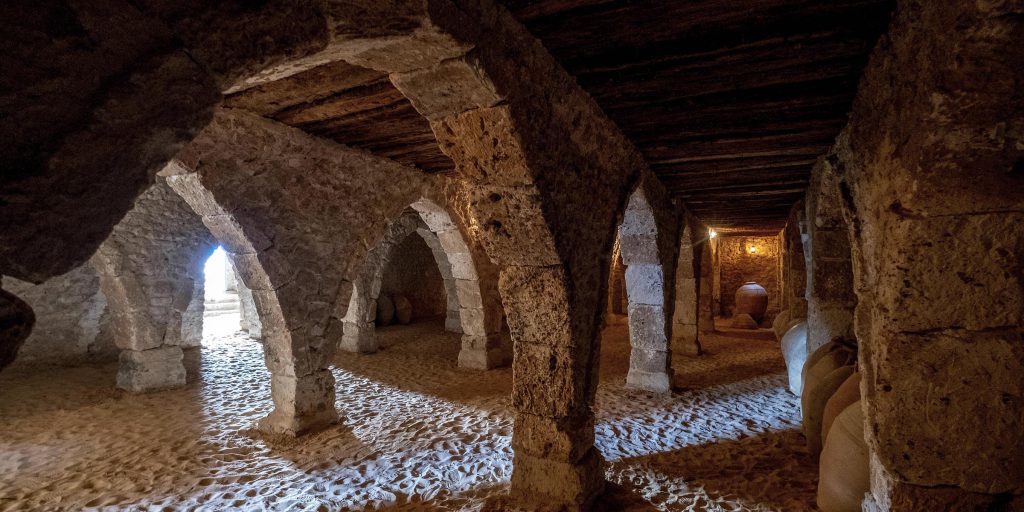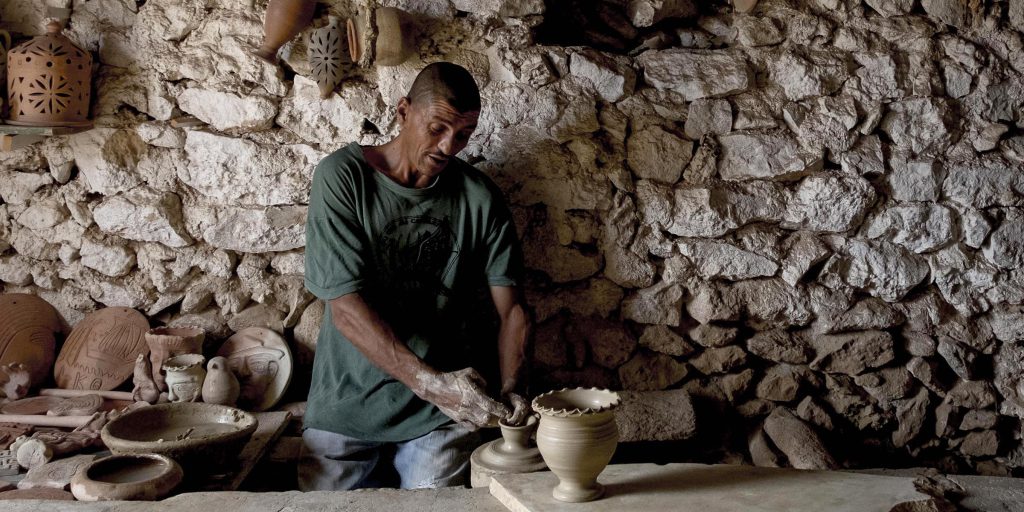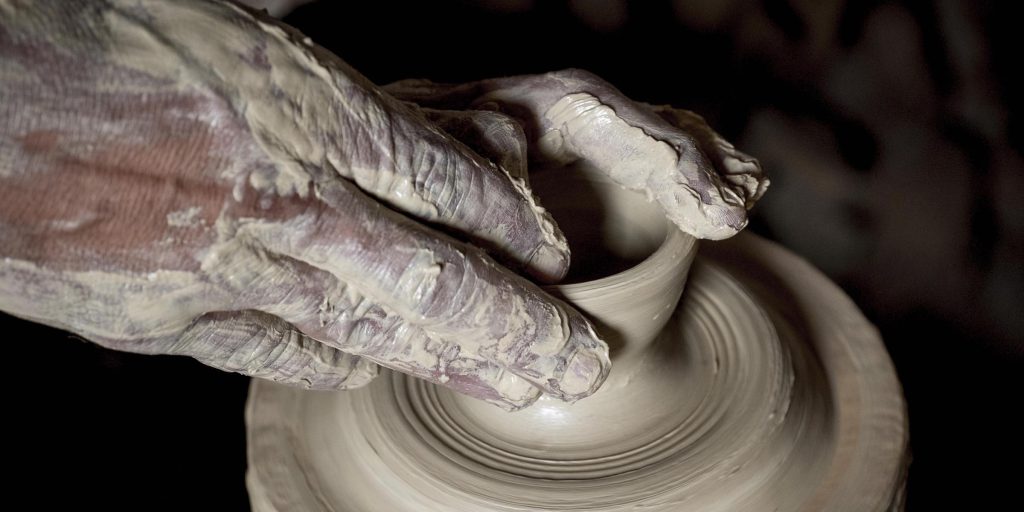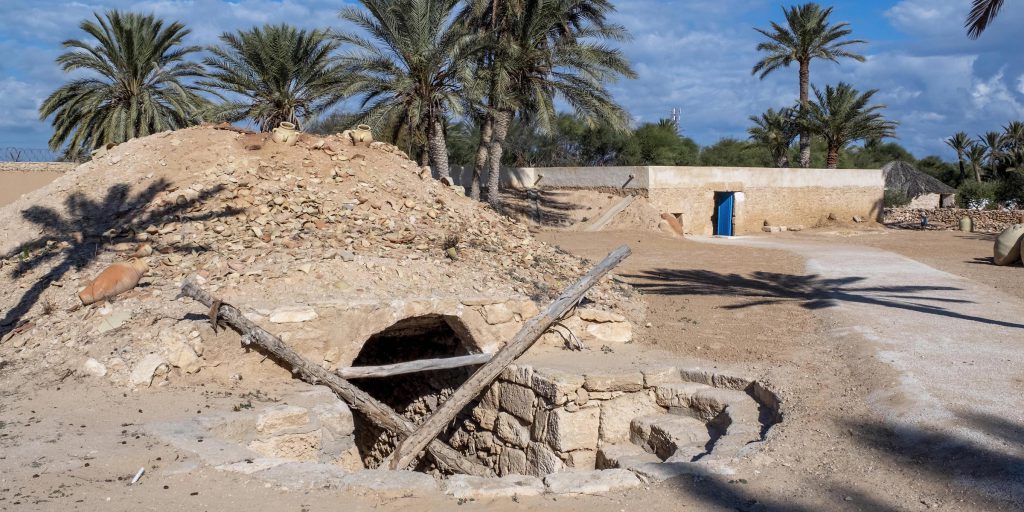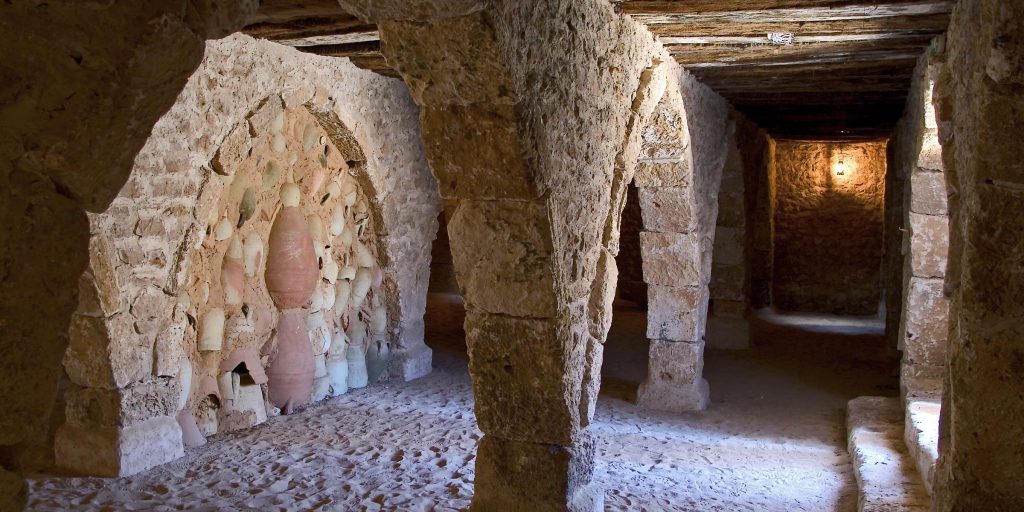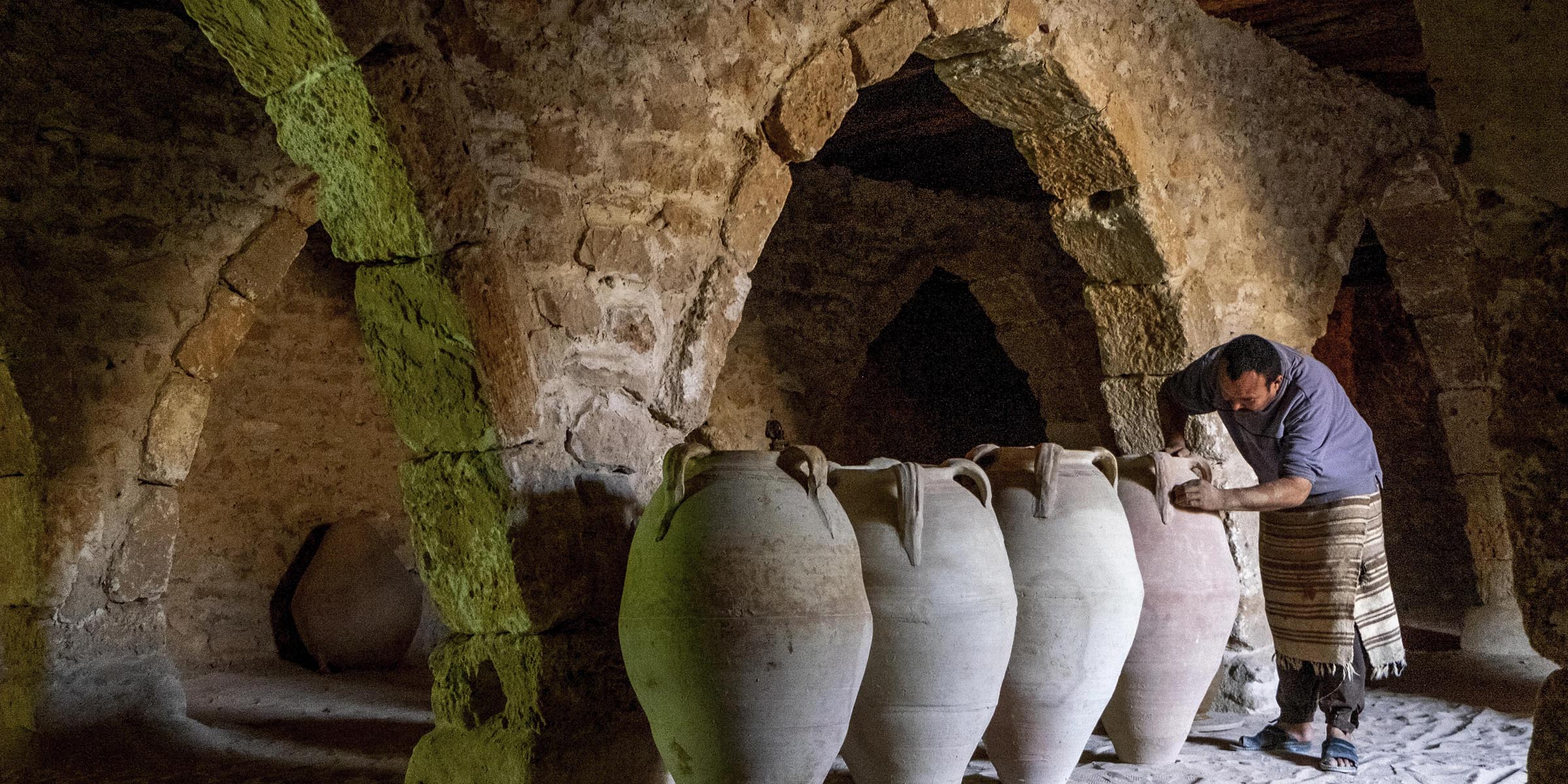
THE POTTERY WORKSHOP
The pottery art was introduced in Tunisia by the Phoenicians. The Djerbian potters, particularly the ones from Guellala, created the turned pottery, fabricated in the workshops which are half buried underground in this region full of clay. More than 400 potteries were in this region but only 20 are remaining. The faithful reconstitution of the workshop will make you discover a world full of beautiful forms and colours: giant jars used for the food storage, the enamelled objects with characteristic colours in a beautiful light. The clay takes shape in the potter’s hand. Then the creations will be cooked in an oven, nourished with palm tree branches.

